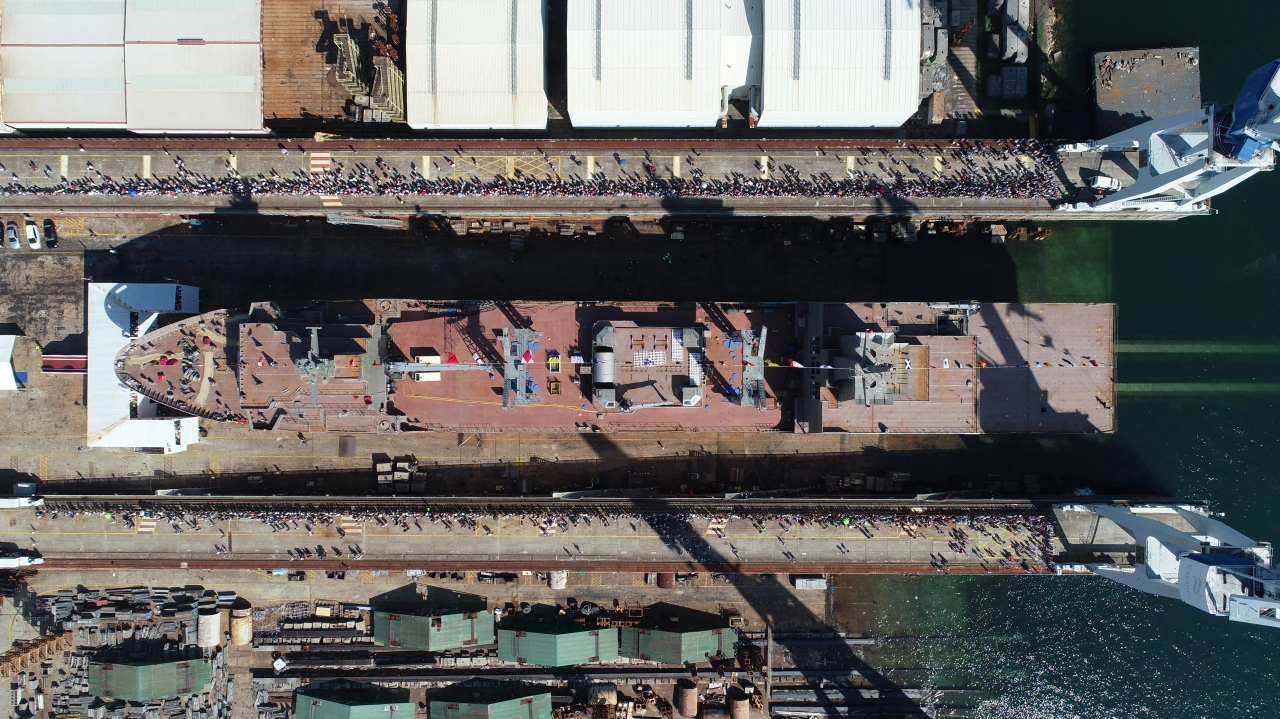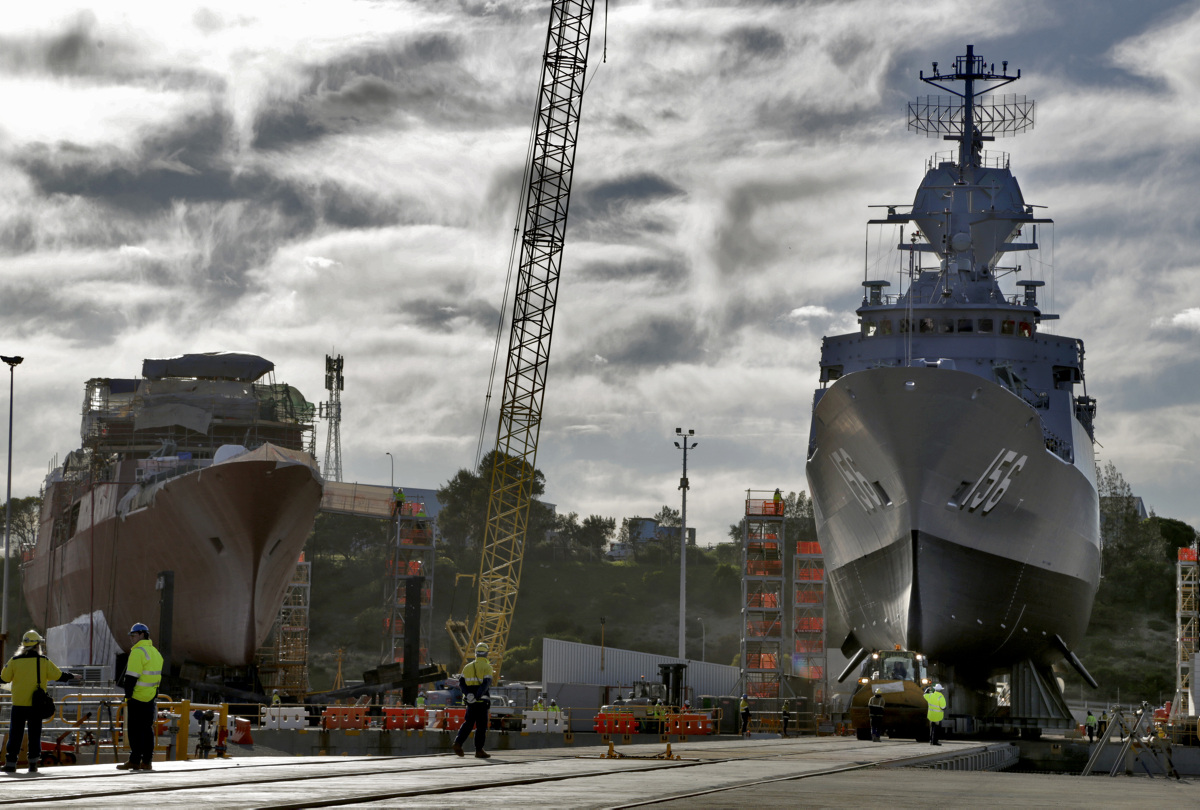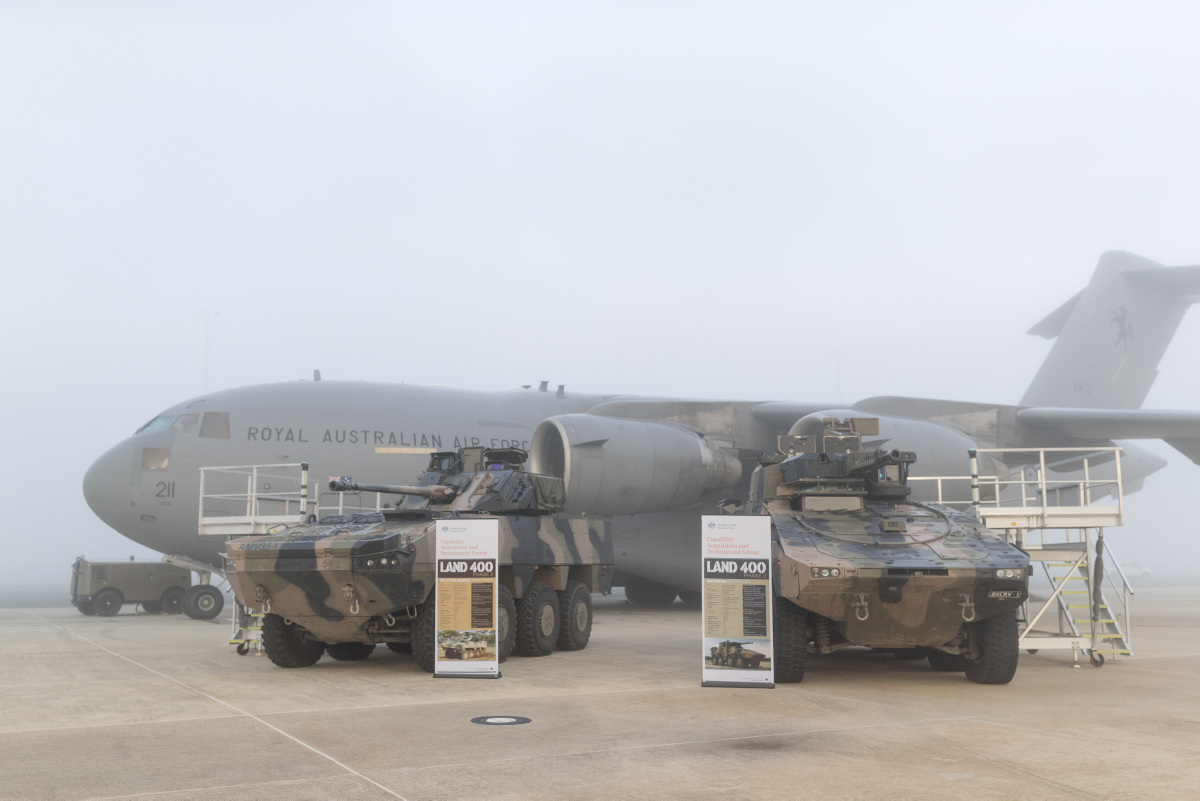This is the third and final part of a presentation given at the Australian – New Zealand Defence Logistics Conference during June 2023. The theme of the conference was ‘supply-chain resilience’.
National Defence: Defence Strategic Review, the Australian Government response to the ‘independently conducted’ Defence Strategic Review (DSR) was released to the public on 24 April 2023, and an Australian defence ‘community’ primarily interested on its recommendations for the Australian Defence Force’s (ADF) capability mix. The review, and statement which followed, portends sweeping changes to the Defence Integrated Investment Plan and to the force structure and the roles of the ADF’s Services consequently. Our understanding of what it entails suffers for the fact that many of us will never see the full, classified, version of the DSR prepared in advance of the Government’s policy statement.
What is particularly important, however, is the emphasis given to the ADF’s logistics capabilities, functions, and concepts in creating the conditions for a better-prepared ADF. National Defence’s emphasis on logistics is clearly more than usual when compared to other Government policy documents of recent years, though this emphasis comes from an exceptionally low base. Supply chain resilience is, of course, a part of this narrative – as we are reminder every time we hear about guided-weapons or military fuels. Although the ADF’s logistics requirements extend beyond such critical supplies, National Defence suggests that the traditional focus on logistics through the lens of capability acquisition and sustainment has – perhaps – transitioned a more helpful narrative concerning the role of logistics and national-level preparedness.
Logistics and force posture
As I mentioned earlier in this series, logistics is the connective tissue of force posture, ensuring the viability of forces by the timely provision of personnel, materiel, stores and supplies. Force posture is underpinned by supply chains, distribution and the technical systems – military and civilian – that ensure that the right ‘stuff’ gets to the right location. National Defence requires the ADF to develop a northern Australia network of bases ‘to provide a platform for logistics support, denial and deterrence’ (p19). While this requirement centres on the mechanics of basing by focussing on air bases, shipyards and barracks – all of which must be dispersed and part of a resilient network with in-built redundancy to enable integrated defence. Fuel and ammunition feed into the discussion of force posture, and the importance of exercises to build ‘preparedness including minimum viable improvements in key areas’ is also clear (pp 78-80).
Importantly, force posture must be underpinned by stockholding concepts that ensure sufficient resources are kept, and transport management plans and policies and concepts for working with national partners when needed. The Australian community must be engaged such that logistics plans are developed conscious of local constraints on the staging or mounting of forces, and a full spectrum of Government agencies involved to ensure ‘resilience’ results.
Secondly, force posture is really about force projection, and is not only concerned with the permanent housing of forces. Debates about force posture are meaningless if they do not consider factors such as the receiving of forces at particular locations, equipping and preparing them for deployment or movement, to consolidating forces at forward locations relative to threats, and the command and control measures required to ensure this happens in a well-coordinated and efficient manner.
During Operation Warden, as per part two of this series, ADF force posture – despite its emphasis on operations in Australia’s north – was not complemented with the logistics infrastructure. Forces concentrating in Darwin rapidly exhausted civilian and military sources of supply, and there was insufficient administrative infrastructure to support their mounting. Supply would be assured by unit CO’s who, sending staff to local hardware stores and other shops, would obtain what was needed there and then. Naturally, supply ran out in Darwin quite quick!
Points and ‘mounting’ locations should be chosen to act as places where logistics control can be exerted at a time of crisis – thus avoiding situations such as this. Designated commanders can manage the influx of civilian and military resources necessary to support later military operations. As mentioned earlier, these sites work as ‘pressure release valves’ for supply-chains during crises and allow forces to prepare before moving – or reconstitution if needed. In the case of Operation Warden, a local operational headquarters – HQ NORCOM – was made responsible for coordination which in turn greatly improved the logistics support available.
Theatre logistics system
A section on ‘theatre logistics’ in National Defence is arguably more practically relevant to ADF in the short term, though to resolve capability gaps in ADF logistics capability and capacity will require a consistent pattern of investment over a long-term program. There will be pressure to deliver results in the short term – the DSR portends a great acceleration of the ADF’s logistics programs. There are risks within this acceleration.
Finally, because militaries tend to underinvest in logistics capabilities during times of peace, a sudden burst of financial profligacy can result in hasty decisions that result in the inefficient – potentially ineffective – allocation of funds to resolve what is believed to be the most critical investment issue at any one time. Before money is committed, deep analysis of the logistics system must be undertaken – an analysis a disjointed approach to capability investment can affect the way in which the components of the overall logistics system works – creating inefficiencies and affecting the realisation of effectiveness.
Secondly, any investment must be matched with the right policies, plans and concepts that will ensure a generational shift logistics preparedness and resilience. As prospective logistics systems are complex and complicated, with multiple owners who have different resourcing and management priorities, it can be difficult for militaries to coherently approach the redevelopment of their logistics processes and in the development of capability.
The recognition that Government, and Defence, must reinvest in Defence logistics and health capacity is instructive to a more serious view of preparedness than in the past – as alluded to above. These capabilities are fundamental to ‘unlocking’ the ADF’s true potential. However, it is important to take the time and effort to ensure the investment is appropriately spent – for any investment in logistics resilience tends to be – unfortunately – inconsistently expressed.
The relationship between logistics and preparedness
The idea of accelerated preparedness contained with the DSR speaks – with a touch of drama mind you – to concepts such as mobilisation, force scaling and force expansion. These are ideas that are fundamentally logistics-related in their nature, but also reflect a view that the assumption that having forces available at the outset of a conflict is not as realistic measure of overall preparedness as it might be.
That there should be a ‘reshaping and growth of the national and Defence logistics and health workforce … to improve national resilience’ is important. We can infer from this statement that the authors of the DSR did not think that ‘national resilience’ was where it should be.
The idea of Accelerated Preparedness, recognises the essentiality of the national support base, and national resilience, to military performance. Guided-weapons and fuel enterprises are the tip of a proverbial iceberg with respect to the type of national support arrangements needed to insure logistics sovereignty. These initiatives are part of developing supply chain resilience. However, Accelerated Preparedness requires an investment in the ability of the ADF to enunciate how national and international strategic logistics issues are arranged, how such arrangements are managed, and what relationships should be leveraged. This will be done so through a reinvigorated idea of ‘national support’.
It’s relevant to note that the concept of national support actually has an international component – depending upon how you view what the ‘national support base’ is. It depends on integration beyond it – older definitions of ‘national support base’ which we might include in our study of the concept include the role of alliance partners, coalitions, international supply-chains and other sources of support in creating a ‘resilience’ centric outcome. Arrangements and agreements – such as will be discussed this week between participants of this conference – help develop mutually beneficial supply and support arrangements that complement, if not enhance, what we can do alone.
Interoperable logistics creates strategic resilience and responsiveness. However, it will not be improved unless we take time to resource its achievement. It is important that interoperability should now take an increasingly strategic tone at a time where we are preparing for the next operation. Improved strategic logistics interoperability is not a way to avoid the development costly logistics capabilities for favour of establishing dependant relationships. It’s a way that partners can support one another more readily, giving them options before, during and post-crisis that they may not have had before. In a particularly competitive strategic environment, this approach is not only important but patently necessary, and a means to gain advantage over potential adversaries.
Conclusion
It is quite clear that logistics, preparedness and resilience are mingling in a broad conversation about the modes and means of military power at a time of substantial geopolitical change. Supply chain resilience is a critical strategic concern for militaries to monitor, but it is also a fundamental component to the way in which militaries create, prepare and deploy forces. Naturally, our current interest in the topic is well deserved.
It is important that we work through the semantics of the matter as the ADF and NZDF reorient themselves. Doing so may engender further conversations that ultimately change the preparedness cultures that were created to support the operations of a different time.
Resilience is about adaptability, resistance to shock, and about options for subsequent operational action. It is about capability depth, supporting systems, logistics and capacity – and in the context of this conference – a supply chain network as a buffer. In an operational context, resilience speaks to the capacity of a force to maintain its freedom of action, and for commanders the freedom of decision.
Resilience in logistics, and most certainly in terms of supply chains, requires redundancy and a good sense of risks which could be realised at a time of crisis. The ability to identify what is happening where, to vector in support from different sources, so to reconstitute support where supply chains have fractured or under strain, characterises resilient supply chains as much as it characterises resilient military logistics.
Established effectively, sources of resilience, create considerable strategic advantages. A resilient nation might be more speedily mobilised, or adapt to strategic surprise in the context of a range of contingencies. A military with reliable access to what it needs can respond quicker to a broader range of events and sustain its operations for much longer. Resilience is also underpinned by interoperability and logistics arrangements between partners with shared interests.
As we consider how our respective militaries work to better prepare themselves for future challenges, it is worth remembering the idea of logistics preparedness. Anything that is developed must be done so with the right plans and policies in mind, the organisation structured appropriately and resourced needed, with logistics capabilities well-resourced and integrated, and with a regime of exercising and assessments conducted to assure responsiveness. These factors are also a good way of looking at supply-chain resilience – let alone any other factor – that might significantly impact an approach to logistics at a time of crisis.
Thankyou for reading this series: Part one and Part two can be found at the links.






